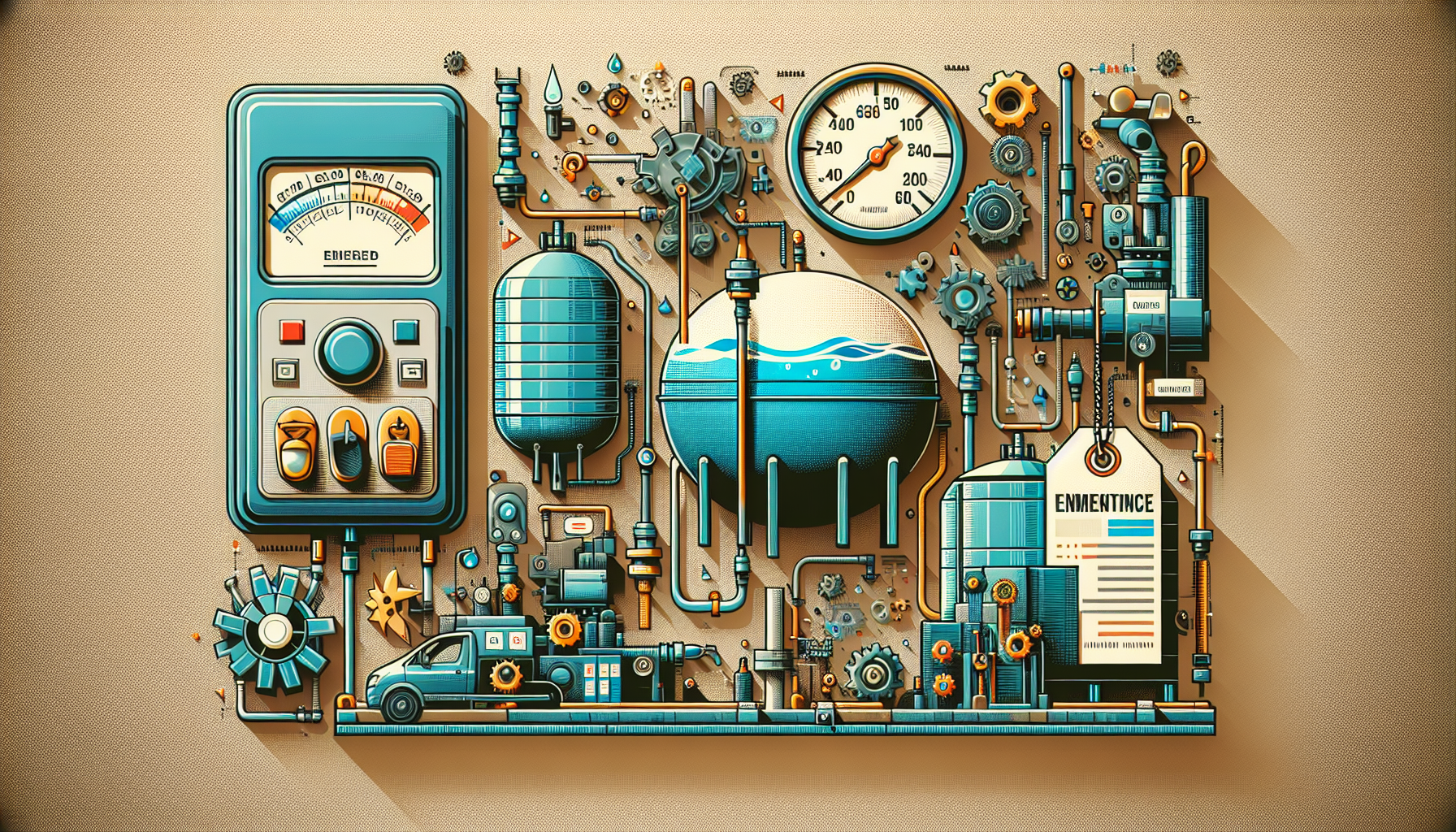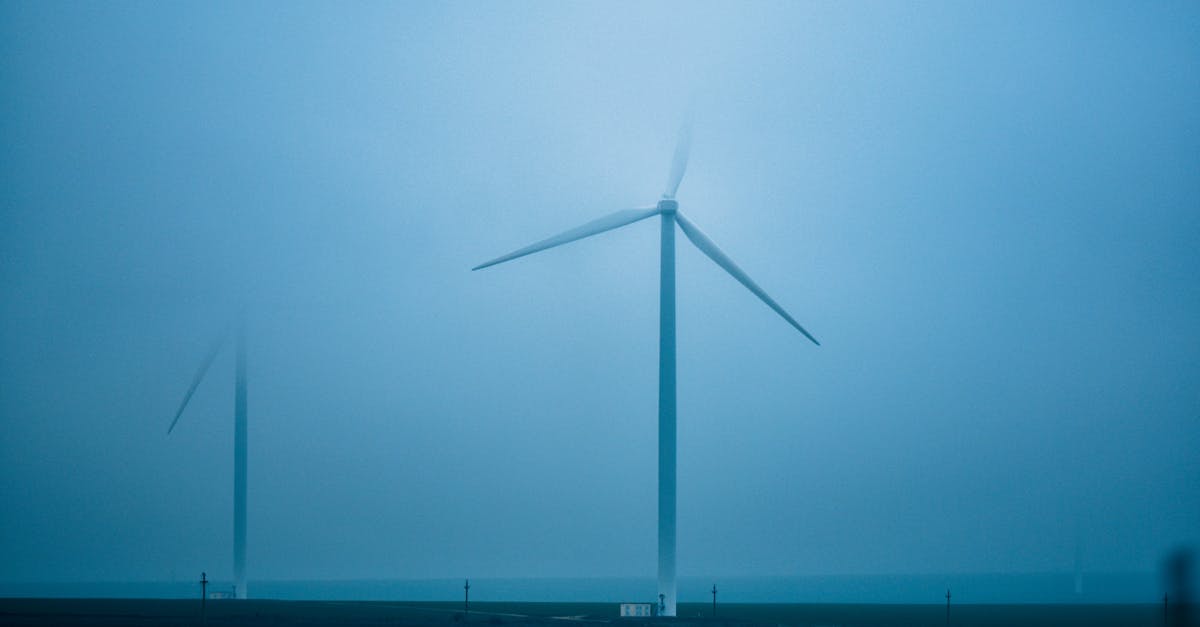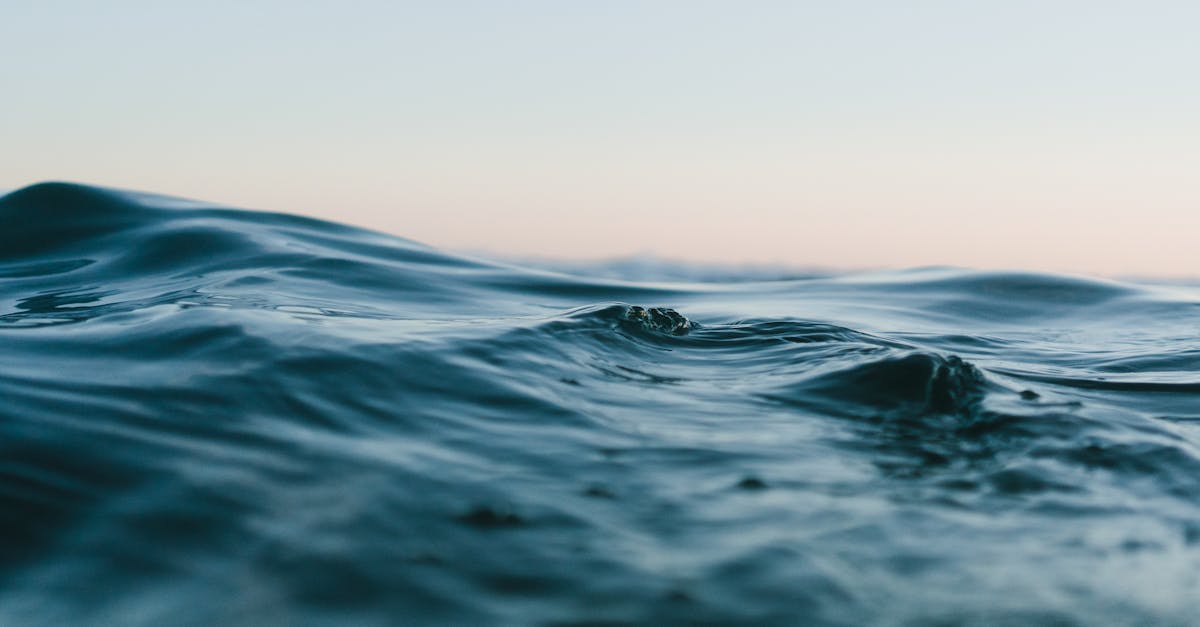Unveiling the Potential Pitfalls: A Critical Look at Air-to-Water Technology

The Downsides of Air-to-Water Technology: A Sobering Reality Check
Air-to-water technology has emerged as a promising solution to water scarcity, offering a way to convert humidity in the air into drinkable water. However, it’s crucial to acknowledge the potential drawbacks of this technology to make informed decisions about its implementation. This article delves into the challenges associated with air-to-water systems, examining their energy consumption, limited water production, maintenance requirements, and cost considerations. By understanding these downsides, we can strike a balance between innovation and practicality in our pursuit of sustainable water solutions.
Thank you for reading this post, don't forget to subscribe!
Air-to-water systems have garnered significant attention due to their potential to alleviate water scarcity in regions with limited access to freshwater sources. However, it’s essential to recognize that this technology is not without its limitations. This article aims to provide a comprehensive analysis of the downsides associated with air-to-water systems, empowering readers with a well-rounded perspective on its viability and application.
1. Energy Consumption: A Major Concern
Energy Consumption: A Major Concern
Air-to-water systems require significant amounts of electricity to operate, which can translate into substantial electricity bills and environmental concerns. The energy consumption of these systems is primarily attributed to the compressors and fans used to draw in and process air. Compressors consume the bulk of the energy, as they work continuously to compress air and create the necessary pressure for water extraction.
The environmental impact of air-to-water systems is another important consideration. If the electricity used to power these systems is generated from non-renewable sources, such as fossil fuels, then the operation of these systems contributes to greenhouse gas emissions. Therefore, it is crucial to carefully evaluate the energy efficiency of air-to-water systems and prioritize the use of renewable energy sources to minimize their environmental footprint.
To address the energy consumption challenges, manufacturers are continuously working to improve the efficiency of air-to-water systems. Some potential solutions include optimizing compressor design, utilizing energy-efficient fans, and implementing smart control systems to reduce energy usage during periods of low water demand. Additionally, exploring alternative energy sources, such as solar or wind power, can further reduce the environmental impact of these systems.
High Electricity Demand
High Electricity Demand
Air-to-water systems have a significant electricity demand due to the energy required to power their compressors, fans, and other components. Compressors are the most energy-intensive components, as they work continuously to compress air and create the necessary pressure for water extraction. Fans are also essential for drawing in air and maintaining airflow through the system.
The high electricity demand of air-to-water systems can translate into substantial electricity bills, especially for systems that operate continuously or in regions with high electricity costs. It is important to carefully consider the electricity consumption of these systems and factor in the ongoing operating costs when evaluating their viability.
To reduce electricity consumption, manufacturers are continuously working to improve the energy efficiency of air-to-water systems. Some potential solutions include optimizing compressor design, utilizing energy-efficient fans, and implementing smart control systems to reduce energy usage during periods of low water demand. Additionally, exploring alternative energy sources, such as solar or wind power, can further reduce the operating costs and environmental impact of these systems.
Environmental Implications
Environmental Implications
The energy consumption of air-to-water systems has environmental implications, particularly when non-renewable energy sources are used to generate electricity. The burning of fossil fuels to generate electricity releases greenhouse gases into the atmosphere, contributing to climate change. Therefore, it is important to consider the environmental impact of air-to-water systems and prioritize the use of renewable energy sources to minimize their carbon footprint.
Some potential solutions for reducing the environmental impact of air-to-water systems include:
- Utilizing renewable energy sources: Powering air-to-water systems with renewable energy sources, such as solar or wind power, can significantly reduce greenhouse gas emissions.
- Improving energy efficiency: Manufacturers can continue to improve the energy efficiency of air-to-water systems by optimizing compressor design, utilizing energy-efficient fans, and implementing smart control systems.
By adopting these measures, we can harness the potential of air-to-water technology for sustainable water production while minimizing its environmental impact.
2. Limited Water Production: Addressing the Efficiency Gap
Limited Water Production: Addressing the Efficiency Gap
Air-to-water systems have limitations in terms of water production capacity and efficiency. The amount of water they can produce is influenced by several factors, including:
- Humidity levels: Air-to-water systems rely on extracting moisture from the air, so humidity levels play a significant role in their water production capacity. In dry environments, these systems may struggle to produce sufficient amounts of water.
- Temperature: Air temperature also affects water production. Warmer air can hold more moisture, so air-to-water systems tend to be more efficient in warmer climates.
- System size and efficiency: The size and efficiency of the air-to-water system itself can impact water production. Larger systems with higher efficiency ratings can produce more water.
To improve the water production efficiency of air-to-water systems, researchers and manufacturers are exploring various approaches, such as:
- Advanced moisture extraction technologies: Developing more efficient methods to extract moisture from the air, even in low-humidity environments.
- Energy-efficient system designs: Optimizing system components and utilizing energy-saving features to reduce energy consumption while maintaining water production.
- Hybrid systems: Combining air-to-water technology with other water sources, such as rainwater harvesting or desalination, to increase overall water production capacity.
By addressing the limitations of water production and improving efficiency, air-to-water systems can become more viable solutions for water scarcity in diverse climatic conditions.
Low Water Yield
Low Water Yield
Air-to-water systems typically produce small amounts of water compared to traditional water sources, such as wells or desalination plants. This is because the process of extracting moisture from the air is inherently less efficient than other water production methods. As a result, air-to-water systems are generally not suitable for large-scale applications that require significant amounts of water, such as industrial processes or large-scale irrigation.
However, air-to-water systems can be a viable solution for small-scale applications, such as providing drinking water for households or communities in remote areas with limited access to traditional water sources. They can also be used as a supplemental water source to reduce reliance on other water sources, especially during periods of drought or water scarcity.
Researchers and manufacturers are continuously working to improve the water production capacity of air-to-water systems. Some potential solutions include developing more efficient moisture extraction technologies, optimizing system designs, and utilizing hybrid systems that combine air-to-water technology with other water sources.
Environmental Conditions and Efficiency
Environmental Conditions and Efficiency
The efficiency of air-to-water systems is influenced by environmental conditions, such as humidity and temperature. Humidity plays a crucial role in water production, as air-to-water systems rely on extracting moisture from the air. Higher humidity levels generally result in higher water production. However, in dry environments with low humidity, air-to-water systems may struggle to produce sufficient amounts of water.
Temperature also affects water production efficiency. Warmer air can hold more moisture, so air-to-water systems tend to be more efficient in warmer climates. In cold environments, the air’s moisture content is lower, which can reduce water production.
To address the challenges posed by environmental conditions, researchers and manufacturers are exploring various approaches, such as:
- Advanced moisture extraction technologies: Developing more efficient methods to extract moisture from the air, even in low-humidity environments.
- Climate-specific system designs: Optimizing system designs to suit different climatic conditions, such as using larger condensers in humid environments and smaller condensers in dry environments.
- Hybrid systems: Combining air-to-water technology with other water sources, such as rainwater harvesting or desalination, to increase overall water production capacity and reduce reliance on environmental conditions.
By addressing the challenges of environmental conditions and improving efficiency, air-to-water systems can become more reliable and effective solutions for water production in diverse climates.
3. Maintenance and Upkeep: Ensuring Optimal Performance
Maintenance and Upkeep: Ensuring Optimal Performance
Air-to-water systems require regular maintenance and upkeep to ensure optimal performance and longevity. This includes tasks such as:
- Filter cleaning and replacement: Air-to-water systems rely on filters to remove impurities from the air. Regular cleaning or replacement of filters is essential to maintain system efficiency and prevent clogging.
- Professional servicing and troubleshooting: Complex air-to-water systems require professional servicing and troubleshooting to address technical issues and ensure longevity. This may involve periodic inspections, cleaning, and repairs by qualified technicians.
The frequency and cost of maintenance will vary depending on the size and complexity of the air-to-water system, as well as the specific manufacturer’s recommendations. It is important to factor in the ongoing maintenance costs when evaluating the overall cost of an air-to-water system.
Proper maintenance can help extend the lifespan of an air-to-water system and ensure it operates at peak efficiency. By following the manufacturer’s recommended maintenance schedule and addressing any issues promptly, you can minimize the risk of breakdowns and costly repairs.
Filter Cleaning and Replacement
Filter Cleaning and Replacement
Air-to-water systems rely on filters to remove impurities from the air, such as dust, pollen, and other particles. Regular cleaning or replacement of filters is essential to maintain system efficiency and prevent clogging. Clogged filters can restrict airflow, reducing the system’s ability to extract moisture from the air and produce water.
The frequency of filter cleaning or replacement will depend on the specific system and the environment in which it operates. In areas with high levels of dust or pollution, more frequent filter maintenance may be necessary. It is important to follow the manufacturer’s recommended maintenance schedule to ensure optimal performance.
Cleaning air-to-water system filters is typically a simple process that can be done by the user. Some filters may be washable, while others may need to be replaced. It is important to use high-quality filters and to replace them regularly to ensure the system is operating efficiently and producing clean water.
Professional Servicing and Troubleshooting
Professional Servicing and Troubleshooting
Complex air-to-water systems require professional servicing and troubleshooting to address technical issues and ensure longevity. This may involve periodic inspections, cleaning, and repairs by qualified technicians. Regular professional servicing can help identify and resolve potential problems before they become major issues, reducing the risk of breakdowns and costly repairs.
Professional technicians have the knowledge and experience to diagnose and fix a wide range of technical issues with air-to-water systems. They can also provide guidance on proper maintenance and operation to ensure the system is running at peak efficiency. If you encounter any unusual noises, leaks, or other problems with your air-to-water system, it is important to contact a qualified technician promptly.
By scheduling regular professional servicing and addressing any issues promptly, you can extend the lifespan of your air-to-water system and ensure it continues to provide clean, fresh water for years to come.
4. Cost Considerations: Balancing Investment and Water Supply
Cost Considerations: Balancing Investment and Water Supply
The installation and operation of air-to-water systems involve significant costs. It is important to carefully consider the financial implications and potential return on investment (ROI) before investing in this technology.
The initial investment for an air-to-water system includes the cost of the equipment, installation, and setup. The cost of the equipment will vary depending on the size and capacity of the system, as well as the brand and model. Installation costs will also vary depending on the complexity of the installation and the location of the system.
In addition to the initial investment, there are also ongoing operating costs associated with air-to-water systems. These costs include electricity consumption, maintenance, and repairs. Electricity consumption is the most significant ongoing cost, as air-to-water systems require a significant amount of energy to operate. Maintenance costs will vary depending on the size and complexity of the system, as well as the frequency of maintenance required.
It is important to carefully weigh the costs and benefits of air-to-water systems before making an investment. In areas with limited access to clean water, air-to-water systems can provide a valuable source of fresh water. However, it is important to consider the long-term costs of the system, including both the initial investment and the ongoing operating costs, to determine if it is a financially viable solution.
Initial Investment and Installation Costs
Initial Investment and Installation Costs
Air-to-water systems require an upfront investment for equipment, installation, and setup, which can be a substantial expense. The cost of the equipment will vary depending on the size and capacity of the system, as well as the brand and model. Installation costs will also vary depending on the complexity of the installation and the location of the system.
The initial investment for a small, residential air-to-water system can range from $5,000 to $15,000. Larger, commercial systems can cost upwards of $100,000 or more. Installation costs typically range from $1,000 to $5,000, depending on the complexity of the installation.
It is important to factor in the initial investment cost when considering an air-to-water system. However, it is also important to consider the long-term savings that an air-to-water system can provide. Air-to-water systems can significantly reduce or eliminate water bills, and they can also provide a source of clean, fresh water in areas where traditional water sources are scarce or contaminated.
Ongoing Operating Costs
Ongoing Operating Costs
In addition to the initial investment cost, there are also ongoing operating costs associated with air-to-water systems. These costs include electricity consumption, maintenance, and repairs.
Electricity consumption is the most significant ongoing cost, as air-to-water systems require a significant amount of energy to operate. The amount of electricity consumed will vary depending on the size and efficiency of the system, as well as the climate in which it is operated. In general, air-to-water systems consume between 1 and 3 kWh of electricity for every gallon of water produced.
Maintenance costs will vary depending on the size and complexity of the system, as well as the frequency of maintenance required. Regular maintenance is essential to keep the system operating efficiently and to prevent costly repairs. Maintenance tasks may include cleaning or replacing filters, checking the refrigerant levels, and inspecting the electrical components.
Repairs may be necessary if the system breaks down or malfunctions. The cost of repairs will vary depending on the nature of the problem. It is important to factor in the potential for repairs when considering the overall cost of an air-to-water system.
What are the main advantages of air-to-water systems?
Air-to-water systems offer several advantages, including the ability to produce clean, fresh water from the air, reducing reliance on traditional water sources, and providing a potential solution for water scarcity in arid or remote areas.
What are the main challenges associated with air-to-water systems?
Air-to-water systems face challenges such as high energy consumption, limited water production capacity, and maintenance requirements. Additionally, the efficiency of these systems can be affected by environmental conditions such as humidity and temperature.
Are air-to-water systems a cost-effective solution for water production?
The cost-effectiveness of air-to-water systems depends on various factors such as the initial investment, ongoing operating costs, and the availability of alternative water sources. While the initial investment can be substantial, air-to-water systems have the potential to reduce or eliminate water bills in the long run.
What are some potential improvements and future prospects for air-to-water technology?
Ongoing research and development efforts are focused on improving the efficiency of air-to-water systems, reducing energy consumption, and increasing water production capacity. Additionally, exploring hybrid systems that combine air-to-water technology with other water sources is a promising area for future development.
How can I determine if an air-to-water system is right for my needs?
To determine if an air-to-water system is suitable for your needs, consider factors such as your water consumption, the climate in your area, the availability of alternative water sources, and your budget. It’s recommended to consult with a professional to assess your specific requirements and provide personalized advice.




